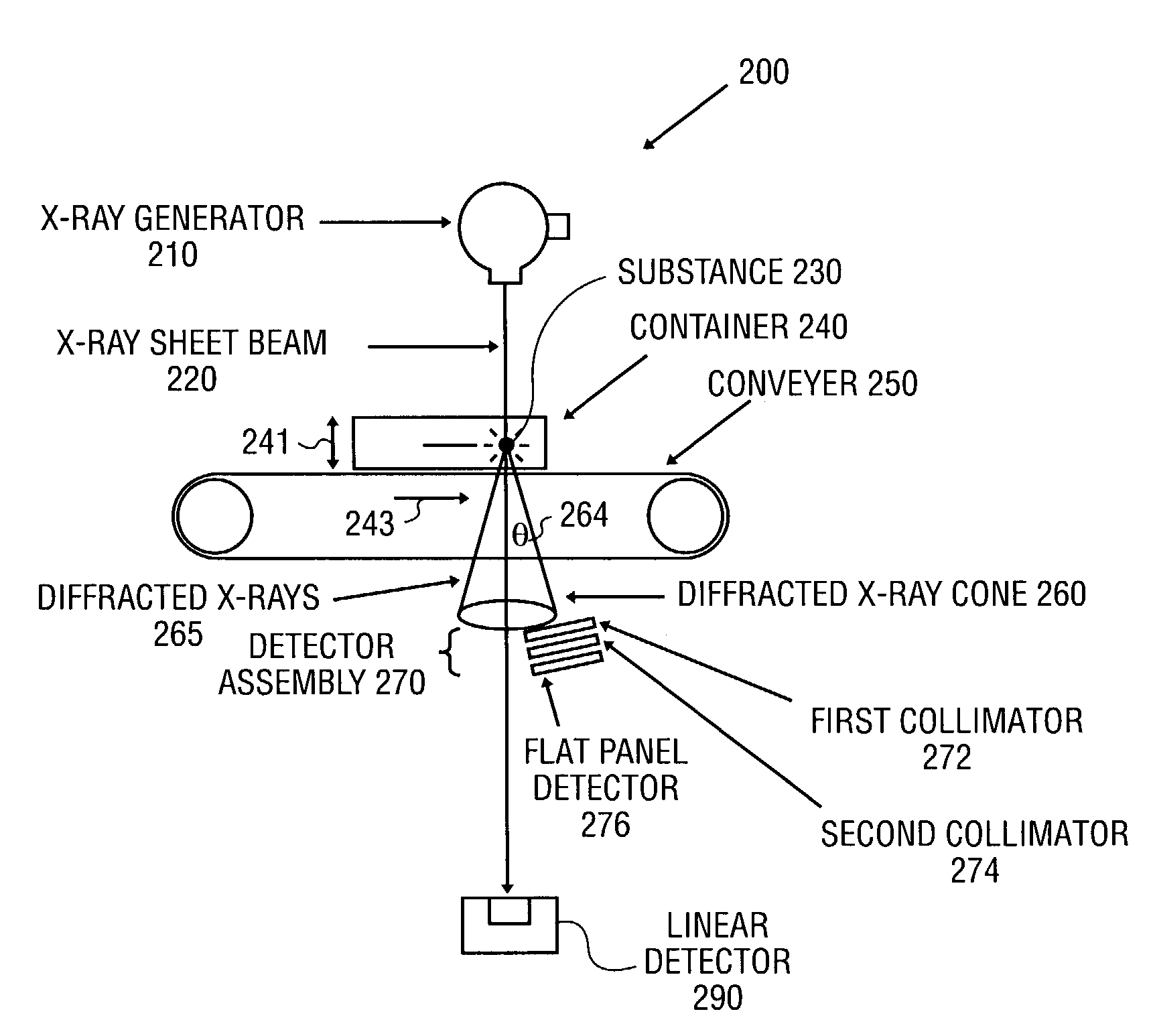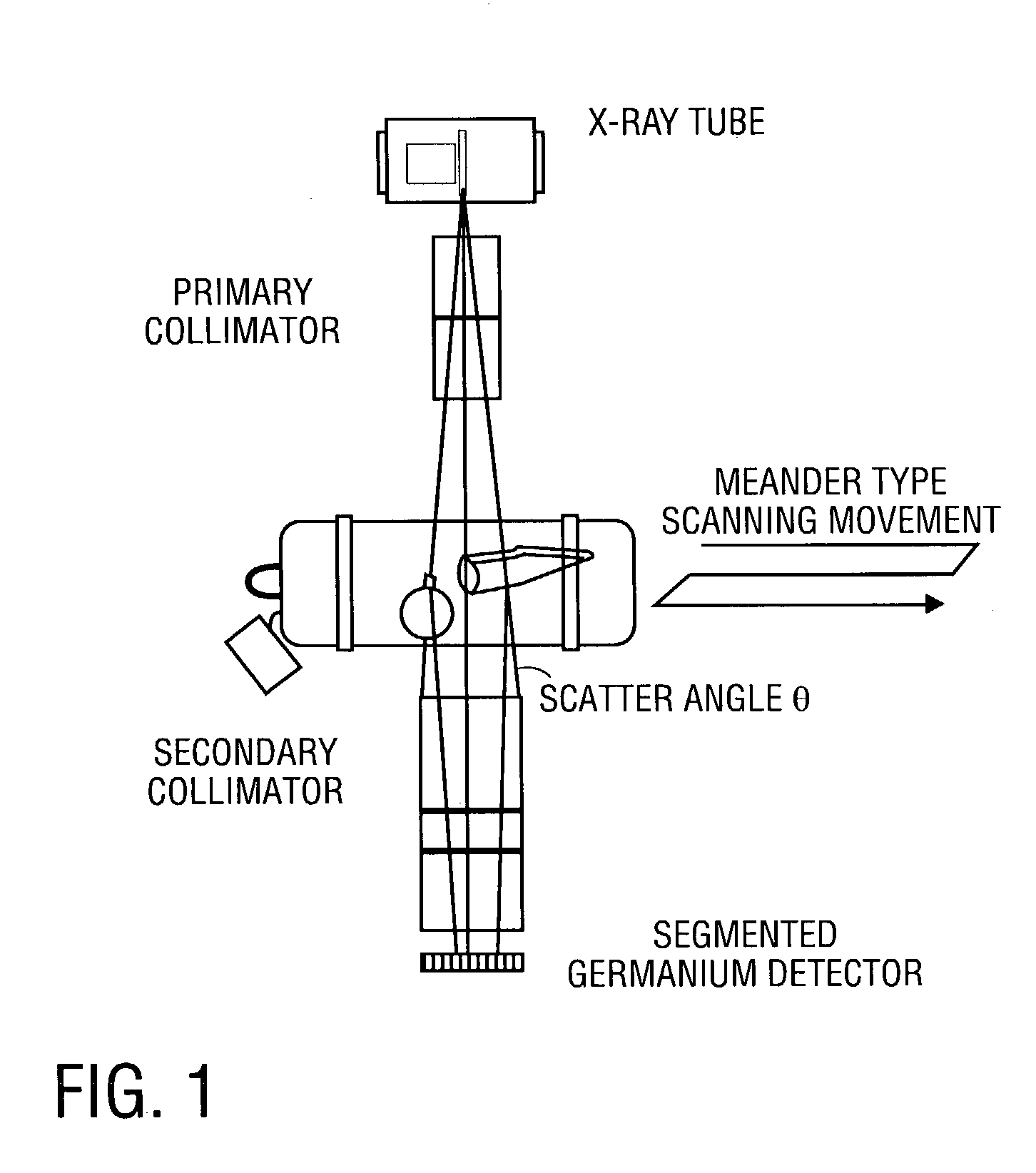X-ray diffraction-based scanning system
- Summary
- Abstract
- Description
- Claims
- Application Information
AI Technical Summary
Problems solved by technology
Method used
Image
Examples
Embodiment Construction
[0024]In the following description, numerous specific details are set forth such as examples of specific components, processes, etc. in order to provide a thorough understanding of the present invention. It will be apparent, however, to one skilled in the art that these specific details need not be employed to practice the present invention. In other instances, well known components or methods have not been described in detail in order to avoid unnecessarily obscuring the present invention.
[0025]The terms “above,”“below,” and “between” as used herein refer to a relative position of one layer or component with respect to another. As such, one layer deposited or disposed above or below another layer, or between layers, may be directly in contact with the other layer(s) or may have one or more intervening layers. Moreover, one component in front, behind, below or between another component may be in physical contact with the other component or may have one or more intervening components...
PUM
 Login to View More
Login to View More Abstract
Description
Claims
Application Information
 Login to View More
Login to View More - R&D
- Intellectual Property
- Life Sciences
- Materials
- Tech Scout
- Unparalleled Data Quality
- Higher Quality Content
- 60% Fewer Hallucinations
Browse by: Latest US Patents, China's latest patents, Technical Efficacy Thesaurus, Application Domain, Technology Topic, Popular Technical Reports.
© 2025 PatSnap. All rights reserved.Legal|Privacy policy|Modern Slavery Act Transparency Statement|Sitemap|About US| Contact US: help@patsnap.com



